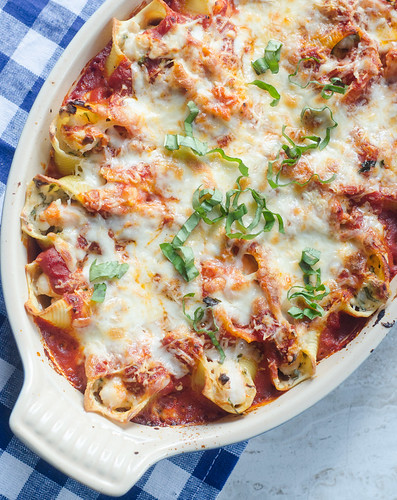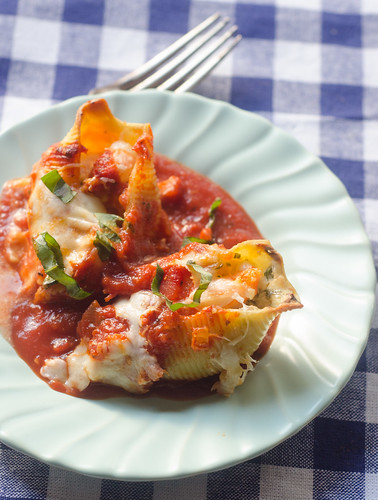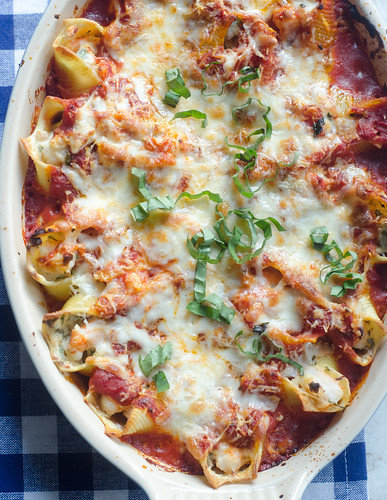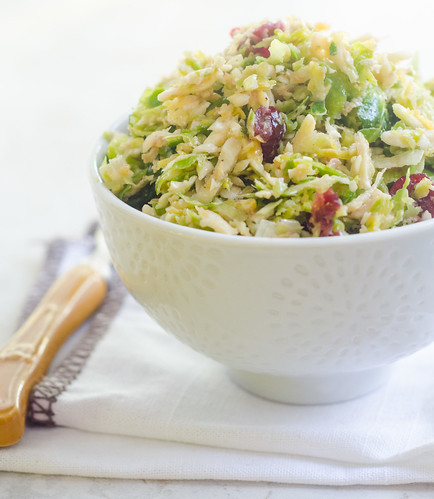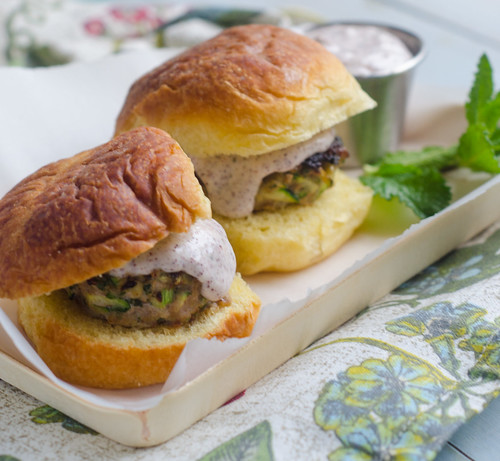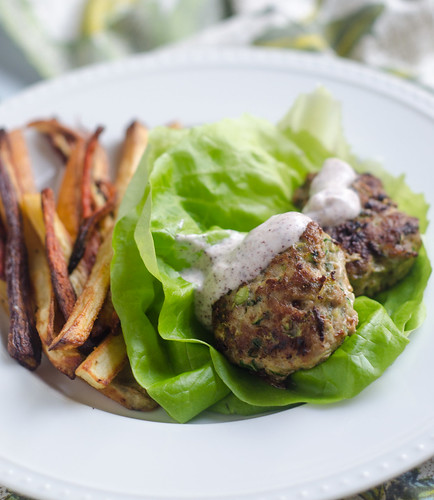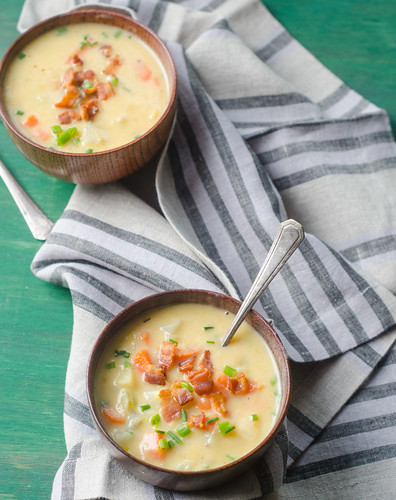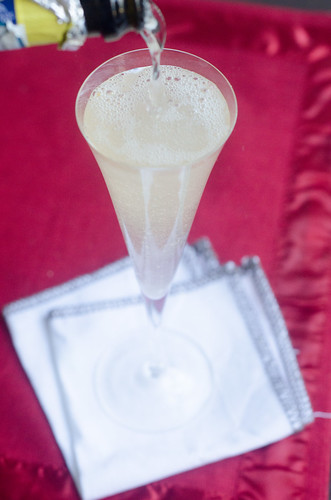Stuffed shells have long-been one of my favorite dinners, but I typically keep it pretty traditional, with a standard sausage-ricottoa-spinach filling. However, I absolutely love seafood pastas, so the minute I saw this shrimp-stuffed shells recipe, I knew it would be a winner. What I didn't expect though, was how MUCH of a winner it would be. Caroline ate an obscene number of these, and Smith had almost as many. Henry and Tucker have entered "the picky era" of their lives, and they even ate these shells with reckless abandon. Which, as I'm sure you can imagine, means, sauce and shrimp flying all over the place and making a giant mess, as only two year olds know how.
The idea of shrimp in a baked pasta dish may seem kind of .. odd.. but the shrimp cook right in the shells, and there's no overcooked, rubbery seafood to be found. The filling is cheesy and creamy, and the rich tomato sauce is a great contrast to that. Of course, no baked pasta dish is complete without a blanket of mozzarella and parmesan, so of course we've got you covered there too.
As we hunker down for another winter storm, I am all about comfort food, and baked pasta definitely fits the bill. And as a bonus, this is actually pretty light. Four shells, which I found to be a very generous serving, is just under 500 calories, making this a really great healthy meal.
Shrimp-Stuffed Shells
adapted from Cooking Light, January 2012
serves 5 to 6
- 20 uncooked jumbo pasta shells
- 1 Tbs olive oil
- 1/2 cup diced shallots
- 2 Tbs minced garlic
- 1/2 cup (4 oz) reduced fat cream cheese, softened to room temperature
- 1/4 cup milk
- pinch of red pepper flakes
- 1/3 cup chopped fresh basil
- 1 pound medium shrimp; peeled, deveined, and cut into thirds
- 2 tsp cornstarch
- cooking spray
- 2-3 cups marinara sauce
- 1/3 cup shredded mozzarella cheese
- 2 Tbs freshly grated Parmesan cheese
Preheat oven to 400° F. Lightly spray a 9x13 inch baking dish with cooking spray.
Bring a large pot of water to a boil and add 2 teaspoons of kosher salt. Cook pasta 7 to 9 minutes or until just al dente. Drain and set aside.
Heat a medium skillet over medium heat. Add oil to pan; swirl to coat. Add shallots and cook 3 to 4 minutes, stirring occasionally. Add garlic and red pepper flakes; cook 1 minute, stirring constantly. Whisk in the cream cheese and milk and cook until cheese melts, stirring until smooth. Remove from heat. Stir in basil. Place shrimp in a bowl. Sprinkle with the corn starch and toss well to coat. Add cream cheese mixture to shrimp. Mix well to combine.
Divide shrimp mixture evenly among pasta shells. Spread 1 cup marinara over bottom of dish. Arrange the shells in a single layer in the prepared dish; top with remaining 1-2 cups marinara. Sprinkle shells evenly with the mozzarella and parmesan cheese. Cover Bake at 400° for 20 minutes. Remove the foil and bake an additional 5 to 10 minutes, or until the cheese is melted and the shrimp are cooked through. Serve.

